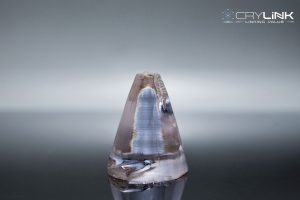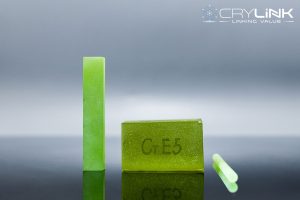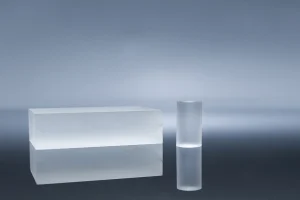Nonlinear crystals, sometimes referred to as laser crystals, have become indispensable in modern laser technology. Their unique properties allow for a diverse range of applications, from frequency conversion to harmonic generation.
Understanding the Fundamental Principles of Nonlinear Optics and Its Importance in Laser Technology
Nonlinear optics is a branch of physics dealing with the interaction of intense light with matter. It hinges on the idea that light can modify the optical properties of a material, an effect that becomes significantly more pronounced at high light intensities.
In laser technology, nonlinear optics is critical for generating different light frequencies and controlling the directionality of laser beams. The foundation of this technology lies in the nonlinear laser crystals that make these processes possible.
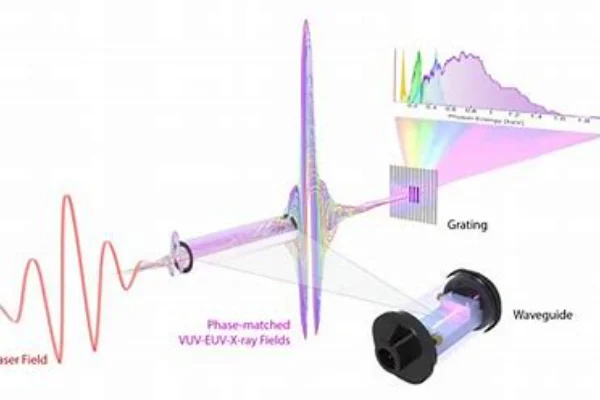
Explaining the Role of Nonlinear Crystals in Frequency Conversion, Harmonic Generation, and Parametric Amplification
Nonlinear crystals play an essential role in laser technology. They serve as the mediums for frequency conversion, transforming an input laser beam into output light with different frequencies.
In harmonic generation, nonlinear crystals convert a single-frequency laser beam into a beam with multiple frequencies, corresponding to integer multiples of the original frequency. This conversion process allows for precise control over the laser’s output characteristics.
Parametric amplification is another important application. Nonlinear crystals can amplify a weak signal beam by transferring energy from a strong pump beam, providing an effective method of boosting the laser’s intensity without adding extra energy to the system.
Types of Nonlinear Laser Crystals: Highlighting Commonly Used Nonlinear Crystals Such as BBO, LBO, KTP, and PPLN
Nonlinear laser crystals, pivotal in advancing laser technology, come in several types. Each crystal possesses unique properties that make it ideal for specific applications. The most commonly used nonlinear crystals are Beta Barium Borate (BBO), Lithium Triborate (LBO), Potassium Titanyl Phosphate (KTP), and Periodically Poled Lithium Niobate (PPLN).
Beta Barium Borate (BBO)
Beta Barium Borate, abbreviated as BBO, is a popular nonlinear crystal with a wide range of applications. This crystal’s claim to fame is its broad transparency range and high damage threshold, making it an excellent choice for high-power applications.
The BBO crystal is highly efficient in generating second and third harmonic frequencies, thereby enabling frequency doubling and tripling in laser systems. It also serves as an effective medium for optical parametric oscillation, a process that generates two output beams with different frequencies from one input beam.
Its high damage threshold allows it to withstand high power densities, making BBO a preferred choice for high-intensity laser systems. Despite its susceptibility to temperature changes, its excellent nonlinear properties make it a mainstay in laser technology.
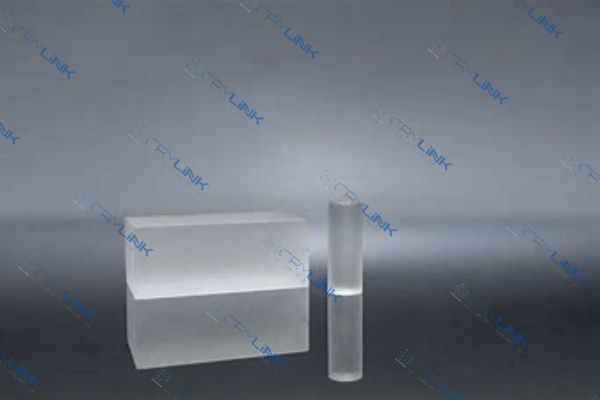
Lithium Triborate (LBO)
Lithium Triborate, commonly referred to as LBO, is another extensively used nonlinear crystal. It stands out for its high optical homogeneity, wide transparency range, and high damage threshold.
The LBO crystal’s noteworthy attributes include its high conversion efficiency and broad phase-matching range, which allow it to handle a variety of laser wavelengths. Its high damage threshold and thermal stability make it particularly suited to high-power and high-temperature applications.
LBO’s temperature insensitivity also reduces the need for active temperature control, making it user-friendly in various operating environments. Whether for harmonic generation, sum-frequency generation, or optical parametric oscillation, LBO proves to be a reliable and versatile nonlinear crystal.
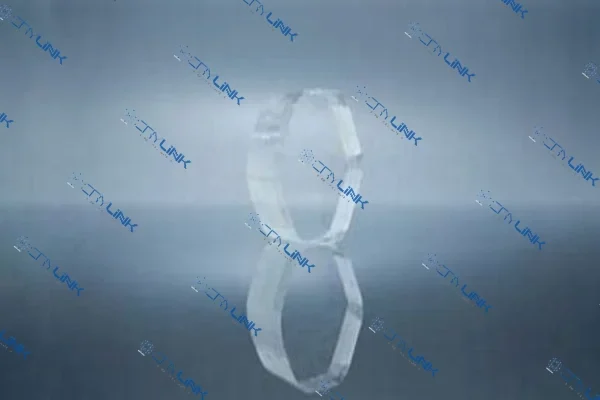
Potassium Titanyl Phosphate (KTP)
Potassium Titanyl Phosphate, known as KTP, is a versatile nonlinear crystal used in several laser applications. It is often employed in devices that require frequency mixing, frequency doubling, and optical parametric oscillation.
KTP crystals boast a high nonlinear coefficient, excellent thermal stability, and a broad transparency range. Their strong second harmonic generation efficiency makes them particularly useful in frequency doubling of Nd:YAG lasers, transforming the infrared laser light into visible green light. While KTP crystals may not have as high a damage threshold as BBO or LBO, their overall performance and versatility make them a popular choice in nonlinear optics.
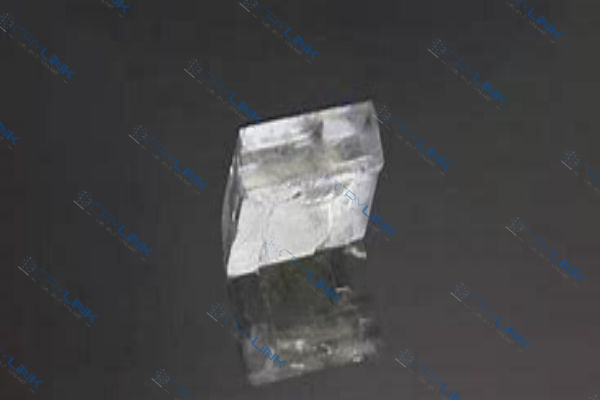
Periodically Poled Lithium Niobate (PPLN)
Periodically Poled Lithium Niobate (PPLN) is a nonlinear crystal known for its high efficiency in frequency conversion. The ‘periodically poled’ part of its name refers to the artificial periodic modulation of its crystal lattice, a process that dramatically enhances its nonlinear properties.
PPLN crystals excel in generating second and third harmonic frequencies, and they have found extensive use in creating efficient mid-infrared lasers. Despite their lower damage threshold compared to crystals like BBO and LBO, PPLN crystals’ unique nonlinear properties and high conversion efficiency make them indispensable in many laser applications.
In summary, the choice of nonlinear crystal – be it BBO, LBO, KTP, or PPLN – depends on the specific application. Each crystal brings something unique to the table, and understanding these properties is vital in harnessing the full potential of nonlinear optics.
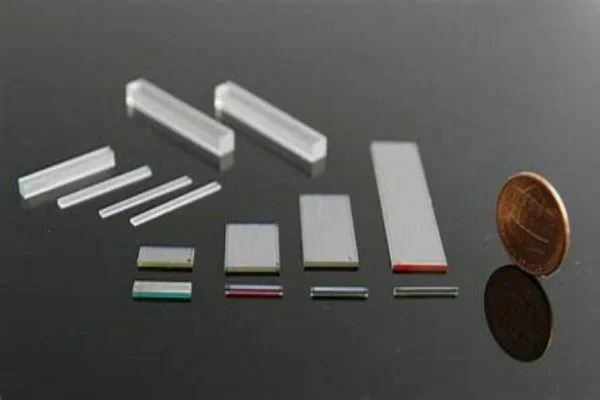
Broadening the Wavelength Range with Nonlinear Crystals
One significant advantage of nonlinear crystals is their ability to extend the laser’s wavelength range. This broadening effect allows lasers to reach wavelengths not usually achievable by the laser’s source material alone. It opens up a myriad of applications in fields such as telecommunications, scientific research, and medical imaging.
Enhancing Laser Power and Efficiency with Nonlinear Crystals
Nonlinear crystals can significantly enhance a laser’s power and efficiency. By transforming a single-frequency laser beam into a multi-frequency beam, they enable greater control over the laser’s output power. This control mechanism is vital for laser applications requiring high power levels or precise power modulation.
Nonlinear Crystals for Ultrafast Laser Applications
Nonlinear crystals have been key players in the development of ultrafast laser technology. Ultrafast lasers, characterized by extremely short pulse durations, have applications in several scientific and industrial fields, including telecommunications, microscopy, and material processing. Nonlinear crystals help generate these ultra-short pulses and control their properties, making them invaluable for ultrafast applications.
Nonlinear Crystal Comparisons: Choosing the Right Crystal for Your Application
Choosing the appropriate nonlinear crystal for your application requires careful consideration of various factors. These include the crystal’s nonlinear coefficients, damage thresholds, and temperature sensitivities. Understanding these properties can guide you towards a crystal that aligns with your specific wavelength conversion, power requirements, and environmental conditions.
Nonlinear Coefficients
The nonlinear coefficient of a crystal is a measure of its efficiency in generating nonlinear optical effects. For instance, the BBO crystal has a high nonlinear coefficient, making it excellent for high-power applications. On the other hand, the PPLN crystal, although having a lower nonlinear coefficient, exhibits significant efficiency in frequency conversion processes due to its periodic poling.
Damage Thresholds
The damage threshold of a crystal is the maximum laser intensity that it can withstand without being damaged. For high-intensity applications, crystals like BBO and LBO are ideal because of their high damage thresholds. However, for lower-intensity applications where power efficiency is a priority, crystals like KTP and PPLN would be more suitable.
Temperature Sensitivities
The performance of a nonlinear crystal can be influenced by temperature variations. For instance, LBO crystals are known for their high thermal stability, making them suitable for applications in demanding environments. In contrast, BBO crystals, while excellent for high-power applications, are more sensitive to temperature changes, necessitating temperature control for optimal performance.
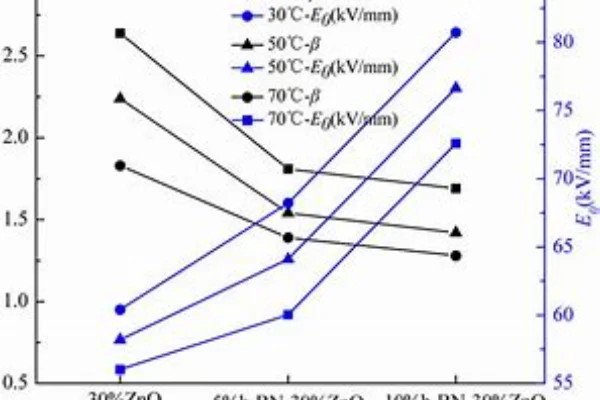
Wavelength Conversion and Power Requirements
The desired wavelength conversion and power requirements of your application are critical considerations when choosing a nonlinear crystal. For example, if you’re aiming for efficient frequency conversion in the mid-infrared range, PPLN would be an ideal choice. Conversely, for high-power frequency doubling applications, BBO would be more suitable due to its high damage threshold.
Environmental Factors
Consideration of the operating environment is crucial when choosing a nonlinear crystal. Some crystals perform better under certain conditions. For example, LBO’s high thermal stability makes it more resilient in harsh operating conditions compared to other crystals.
In conclusion, selecting the right nonlinear crystal for your application involves a comprehensive understanding of the crystal’s properties and your specific requirements. By carefully considering these factors, you can choose the most suitable crystal to maximize the performance of your laser system.
Conclusion
In conclusion, nonlinear laser crystals play a pivotal role in laser technology, offering several advantages such as enhancing laser performance, broadening wavelength range, and enabling ultrafast applications. The key to optimizing these benefits lies in choosing the correct crystal that aligns with your specific application needs. By understanding the unique properties and characteristics of each crystal, you can make a more informed decision and harness the full potential of this exciting technology.
FAQs
- 1. What are the advantages of using nonlinear laser crystals?
- Nonlinear laser crystals enhance laser performance, expand the wavelength range, improve efficiency, and allow for ultrafast applications.
- 2. What factors should I consider when choosing a nonlinear crystal for my application? Consider the crystal’s nonlinear coefficient, damage threshold, temperature sensitivity, and your application’s wavelength conversion and power requirements.
- 3. Can nonlinear crystals be used in high-power laser applications?
- Yes, crystals like BBO and LBO have high damage thresholds, making them suitable for high-power applications.
- 4. How do nonlinear crystals contribute to ultrafast laser technology?
- Nonlinear crystals are key in generating ultra-short pulses and controlling their properties, making them essential for ultrafast laser applications.
- 5. Can the wavelength range of a laser be broadened using nonlinear crystals?
- Yes, nonlinear crystals can extend the laser’s wavelength range, enabling it to reach wavelengths not typically achievable by the laser’s source material alone.
References:
1.Chi, Q. & Hao, Yuyi & Zhang, Tiandong & Zhang, C. & Chen, Qingguo & Wang, Xuan. (2018). Study on nonlinear conductivity and breakdown characteristics of zinc oxide–hexagonal boron nitride/EPDM composites. Journal of Materials Science: Materials in Electronics. 29. 10.1007/s10854-018-0093-y.


